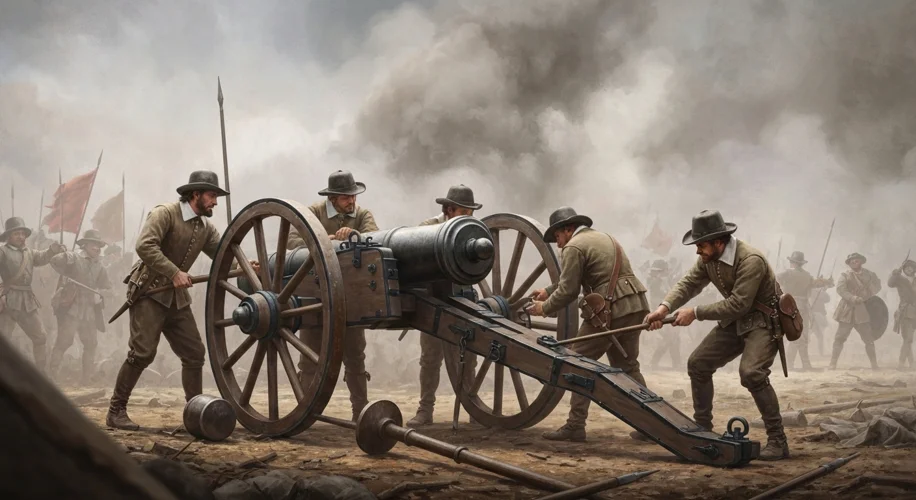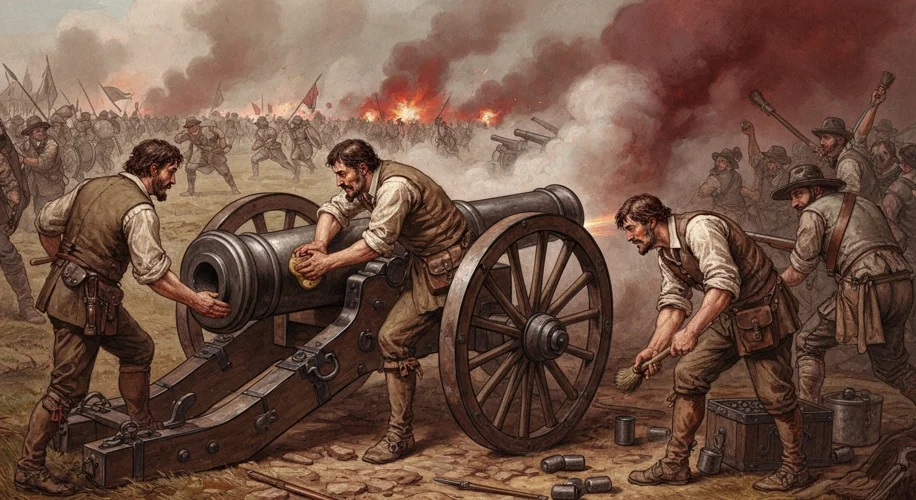Imagine the scene: a 17th-century battlefield. Smoke hangs heavy in the air, the acrid smell of gunpowder stinging your nostrils. Cannons, those monstrous iron beasts, are poised to unleash their fury. Yet, between each earth-shattering roar, there’s a frustrating, agonizing pause. The promise of rapid fort destruction and devastating attacks is palpable, but the reality is a painfully slow rate of fire.
In an era when armies were marching, fortifications were being constructed, and empires were clashing, the effectiveness of artillery was limited not by its potential power, but by its agonizingly slow pace. While a modern machine gun can spit out hundreds of rounds per minute, a 17th-century cannon crew would consider themselves efficient if they could manage two or three shots in an hour.
So, what caused this thunderous pause? It wasn’t a lack of will or bravery from the men serving the guns; it was a complex interplay of design, materials, and the sheer physical labor involved.
The Anatomy of a Slow Fire
Let’s break down the process. Once a cannon had fired, the gun crew faced a series of arduous tasks:
- Cooling: The cannon barrel became searingly hot after each shot. To prevent premature ignition of the gunpowder charge or even a catastrophic explosion, the barrel had to be cooled. This was often done by sponging it out with water or a damp cloth. Too much water, and the charge might fizzle; too little, and disaster loomed.
- Sponging: Before loading the next charge, the bore of the cannon had to be meticulously cleaned of any residual burning material or debris from the previous shot. This was done with a long, sponge-tipped rammer. A stray ember could ignite the new powder charge as it was being loaded, with deadly consequences for the crew.
- Loading the Charge: The gunpowder, typically a carefully measured amount packed into a linen or leather bag, was then inserted into the barrel. This had to be done precisely. Too little powder, and the shot would lack range and power; too much, and the cannon could burst.
- Loading the Projectile: Next came the cannonball, a solid iron sphere. It was rammed home firmly to ensure it was seated correctly against the powder charge.
- Priming: A small hole at the breech of the cannon, called the touchhole, was then filled with a fine powder (priming powder) or a priming tube. This was the final step before the gun could be fired.
- Aiming and Firing: The cannon was aimed using rudimentary sights or by eye, and then fired by igniting the priming powder with a linstock (a slow-burning match attached to a staff) or a flintlock mechanism.
Each of these steps required strength, coordination, and immense care. A typical gun crew consisted of about six to ten men, all working in a tightly choreographed, yet often chaotic, dance.
The Tyranny of Materials and Design
Early artillery pieces were primarily made of cast iron. While effective, these cannons were heavy, prone to cracking under repeated stress, and had relatively thick barrels. The bore itself was not perfectly smooth, contributing to friction and making cleaning more difficult. The breech, where the powder charge was placed, was often a simple cavity, lacking the advanced breech-loading mechanisms we see in modern artillery.
The gunpowder itself was also a factor. While potent, its consistency could vary, and it produced a significant amount of residue that needed to be cleared.

The Human Element: A Marathon, Not a Sprint
The sheer physical exertion involved cannot be overstated. Hoisting heavy cannonballs, manhandling the massive cannon itself (which often needed to be repositioned after each shot), and performing the repetitive cleaning and loading tasks were exhausting. A prolonged siege could see these crews working for days with little rest, their effectiveness diminishing with fatigue.
Furthermore, the environment played a crucial role. Rain could dampen powder, wind could spread embers, and enemy fire, of course, added a constant layer of mortal danger that disrupted the rhythm of the gun crews.
The Illusion of Rapid Destruction
While a single cannonball could indeed be devastating, its infrequent delivery meant that sustained bombardment was a slow process. Fortifications, while vulnerable, were not instantaneously reduced to rubble. Sieges could drag on for months, even years, as attackers painstakingly wore down defenses, shot by shot.
The limitations of artillery in the 17th century highlight a fundamental truth of warfare: technological advancement is often a gradual, iterative process. The potential of a weapon system is only as good as its supporting infrastructure, materials, and the human element that operates it. The thunderous pause between cannon shots was a stark reminder that even the most powerful tools of war were, at this stage, bound by the practical realities of their time.

